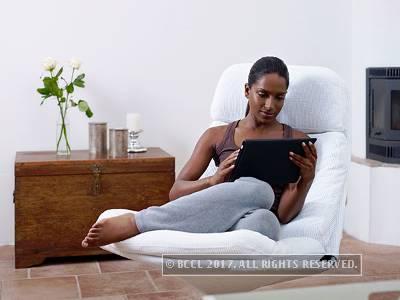
Welcome to Week 5 of my mission to fix the 10 most common decorating mistakes. Last week I got colourful with paint. This week we illuminate common lighting mistakes: not using enough types of lighting in a space, installing light fixtures at the wrong height or buying lamps that aren’t in proportion to other furniture, and choosing the wrong style of light fixture for a space. Read on for fixes and learn how to choose the styles and types that complement your decorating scheme, light up dark spaces and create focal points out of those extra-beautiful things that add ambience to your home.
What’s your type?
Every room needs three types of lighting.
General lighting brightens the overall room and allows people to move through a space safely. This type includes ceiling-mount fixtures or recessed (pot) lighting. Wattage required: 60-100.
Task lighting illuminates smaller areas for a certain function and includes under-cabinet lighting that illuminates countertops, swing-arm floor lamps for reading in a comfy chair, or something as utilitarian as a caged/corded bulb to use in the garage when fixing the car. Wattage required: 40-60.
Accent lighting highlights objects or areas to create ambience. It includes picture lights, canned up-lighting that illuminate plants, or candlestick lamps on a console in a dining room. Wattage required: 15-40.
The highs and lows of lighting
Get the right fixture in the right place using these measurement guidelines.
Chandeliers: The bottom of the chandelier should be 30- to 40-inches above the tabletop. The perfect size? Measure the width of the room in feet and multiply it by two — the result will be the diameter in inches of your ideal chandelier. For instance, if the room is 15 feet wide, multiply it by two. Your chandelier should be 30 inches diameter.
Pendants: Hang kitchen-island pendants 40 inches above the countertop.
Sconces: Wall fixtures should be hung 66-72 inches from the floor.
Bedside lamps: Whether it be a bedside lamp or wall-hung fixture, the light source should be 40-48 inches from the floor.
Sofa/chair end table: The ideal table lamp is 18 inches taller than the sofa or chair arm.
Bright ideas for styles and finishes
Don’t distract and detract from your decor. Use these tips to add ambience and make a style statement in every room.
— For living room end tables, choose ceramic lamps that reinforce the room’s accent colours. Shades are always white, cream or black; anything else is a trend.
— Mixing metals is an art and can be effective and eye-catching, but I advise that metal finishes on lighting fixtures should co-ordinate with other metal finishes within a room. For example, kitchen pendant lights should match stainless-steel appliances or cabinet hardware; bathroom lights should match faucets.
— Choose better-quality lamps, which have clear-coloured cords so the unsightly wires blend into the background.
— Should you buy lamps in pairs? If symmetry is an important aspect in your decor, then, yes. Each side of the bed or sofa are perfect places for a pretty pair.
— I like to mix old lamp styles into modern interiors and vice versa. It’s a great way to add unexpected style to a room.
The bottom line on brilliant lighting
A great looking and well performing light fixture can cost from $10 to $5,000 — a range that can make choosing the right light seem overwhelming. Here’s how to spend wisely.
— Don’t go low-budget on lighting just because there are fixtures available at an economical price. Spend within your budget, but try to keep the big elements, like the sofa, rug, dining chairs and lighting, all in a similar price bracket. Remember that better quality pieces last, whereas lower quality will need to be replaced sooner, ultimately costing you as much in the long run.
— As you would with a mantel, doorknob and cabinetry hardware, consider a hardwired light fixture to be part of the house. These are features that you rarely take when you move, so choose fixtures that suit the architecture so they always look right. You can indulge in trends with a trendsetting shade or funky light bulb; but invest in the best quality fixture your budget allows so it feels like it always belongs in the house.
source:-montrealgazette

